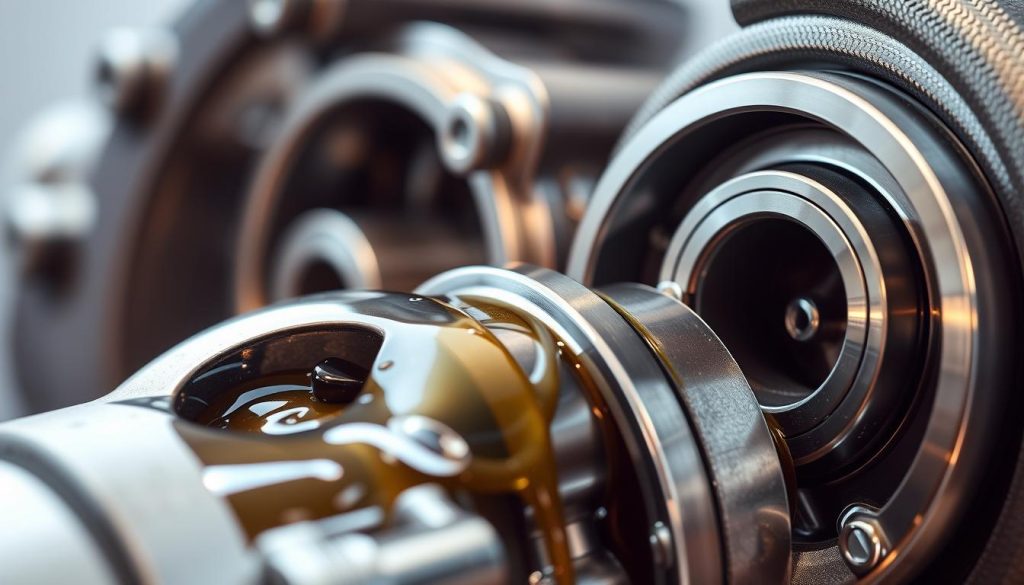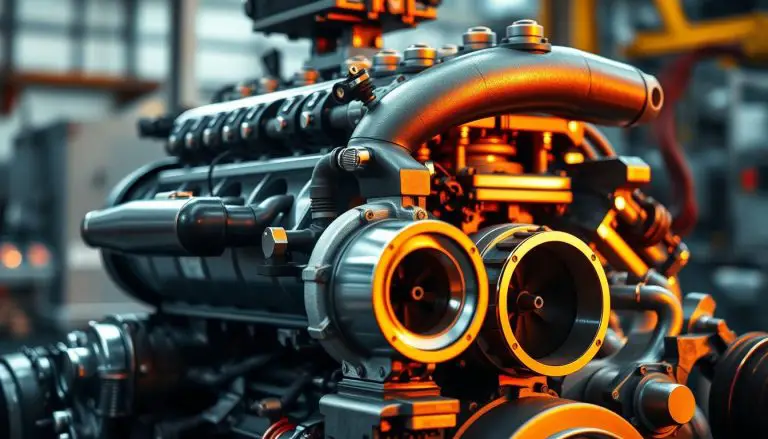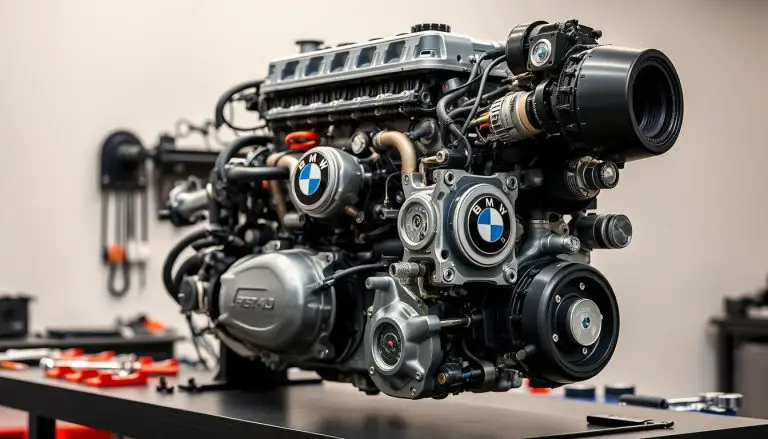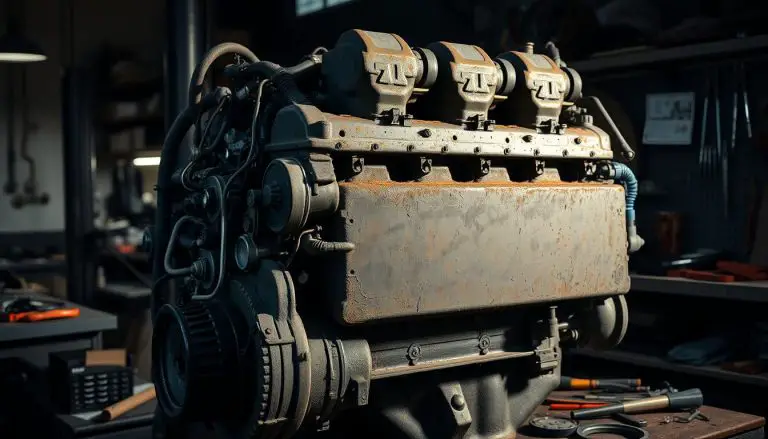The automotive industry’s shift towards turbocharged engines, particularly in American vehicles, has heightened the importance of understanding turbocharged engine lifespan and the factors that influence it.
As these engines become more prevalent, their durability is a growing concern. Various elements contribute to the longevity of turbocharged engines, including maintenance habits, driving conditions, and the quality of engine components.
Understanding factors affecting turbocharged engine durability is crucial for vehicle owners and manufacturers alike, as it directly impacts the overall performance and lifespan of the engine.
Key Takeaways
- Regular maintenance is crucial for extending turbocharged engine lifespan.
- Driving habits significantly impact engine durability.
- Quality of engine components affects overall engine performance.
- Understanding factors influencing durability is key to optimal engine performance.
- Turbocharged engine durability directly impacts vehicle longevity.
The Evolution of Turbocharged Technology
The turbocharged technology has undergone significant transformations since its inception, revolutionizing the automotive industry. This evolution has been marked by significant milestones, from its early adoption to the current state-of-the-art advancements.
Historical Development of Turbochargers
The concept of turbocharging dates back to the early 20th century, with the first applications in aircraft engines. The technology gained popularity in the 1970s and 1980s, with many manufacturers incorporating turbochargers into their production vehicles. Early turbochargers were often plagued by reliability issues, but advancements in materials and design have largely addressed these concerns.
Modern Turbocharging Advancements
Modern turbocharging has seen significant advancements, including the development of variable geometry turbochargers and twin-scroll turbochargers. These innovations have improved performance, reduced turbo lag, and enhanced overall efficiency. Additionally, advancements in materials have enabled the creation of more durable and resistant turbocharger components.
Current Market Prevalence in American Vehicles
Turbocharged engines have become increasingly prevalent in the American automotive market, with many manufacturers adopting this technology to enhance performance and efficiency. According to industry reports, over 50% of new vehicles sold in the United States now feature turbocharged engines. This trend is expected to continue, driven by consumer demand for improved fuel economy and performance.
The growing prevalence of turbocharged engines is a testament to the technology’s ability to deliver improved performance and efficiency. As the automotive industry continues to evolve, it is likely that turbocharged technology will remain a key component in the development of next-generation vehicles.
Life Expectancy of a Turbocharged Engine: Factors Influencing Durability
Understanding the life expectancy of turbocharged engines requires examining statistical data, manufacturer differences, and real-world case studies. The lifespan of these engines can vary significantly based on several key factors.
Statistical Lifespan Analysis
Statistical analysis reveals that the average lifespan of a turbocharged engine can range from 150,000 to over 250,000 miles, depending on the make and model. For instance, a study on the 6.7 Powerstroke turbo diesel engine showed an average lifespan of around 200,000 miles with proper maintenance. More information on this specific engine can be found here.
Manufacturer Reliability Differences
Different manufacturers have varying levels of reliability when it comes to turbocharged engines. For example, some European car manufacturers are known for producing turbocharged engines that last longer due to superior engineering and material quality.
Documented Longevity Case Studies
There are numerous documented cases where turbocharged engines have exceeded expected lifespans. These case studies often highlight the importance of regular maintenance, proper driving habits, and the quality of parts used in the engine.
By understanding these factors and leveraging documented case studies, vehicle owners can take proactive steps to maximize the lifespan of their turbocharged engines.
Critical Engineering and Design Elements
Advanced engineering and thoughtful design are essential for maximizing the durability of turbocharged engines. The intricate balance between performance and longevity is maintained through several critical components.
Bearing Systems and Their Impact
The bearing system is a crucial element in turbocharger design, directly affecting its efficiency and lifespan. High-quality bearings reduce friction and wear, leading to improved turbocharger performance and longer service life.
Intercooler Efficiency Considerations
Intercoolers play a vital role in cooling the compressed air, thereby enhancing engine performance. An efficient intercooler design can significantly improve engine longevity by reducing the thermal stress on the engine.
Wastegate and Boost Control Mechanisms
Wastegate and boost control mechanisms are essential for managing turbocharger boost pressure. Properly functioning wastegates prevent over-boosting, which can damage the turbocharger and engine.
Electronic vs. Mechanical Controls
The choice between electronic and mechanical controls for wastegate and boost management affects turbocharger performance. Electronic controls offer precision and flexibility, while mechanical controls provide simplicity and reliability.
| Control Type | Precision | Reliability |
|---|---|---|
| Electronic | High | Moderate |
| Mechanical | Moderate | High |
Effective turbocharger maintenance involves understanding these critical engineering and design elements. By focusing on bearing systems, intercooler efficiency, and wastegate controls, engine longevity can be significantly enhanced.
Lubrication Systems: The Lifeblood of Turbochargers
Effective lubrication is the backbone of turbocharger reliability, influencing both engine performance and lifespan. The lubrication system is critical in maintaining the health and efficiency of turbocharged engines.

Oil Quality Requirements and Research
The quality of the oil used in turbocharged engines is paramount. Research has shown that high-quality oil with the right viscosity and additives can significantly enhance turbocharger durability. According to a study published by the Society of Tribologists and Lubrication Engineers, the right lubricant can reduce wear on turbocharger components.
Key factors influencing oil quality include viscosity index, detergency, and dispersancy. These factors help in maintaining clean engine components and preventing corrosion.
Oil Delivery System Design Analysis
The design of the oil delivery system is another crucial aspect. An efficient oil delivery system ensures that all moving parts of the turbocharger are adequately lubricated. This involves the design of oil passages, galleries, and the oil pump.
A well-designed oil delivery system can prevent issues such as oil starvation, which can lead to premature wear and failure of the turbocharger.
Documented Failures from Inadequate Lubrication
Inadequate lubrication can lead to catastrophic failures of the turbocharger. There are numerous documented cases where poor lubrication practices have resulted in turbocharger failure.
Case Study: Oil Coking Effects
One significant issue related to inadequate lubrication is oil coking. Oil coking occurs when oil is subjected to high temperatures, causing it to form a hard, carbonaceous deposit. This can clog oil passages and lead to turbocharger failure. A detailed analysis of oil coking effects reveals the importance of maintaining proper lubrication practices to prevent such failures.
“Oil coking is a serious issue that can significantly reduce the lifespan of a turbocharger. Regular maintenance and the use of high-quality oil can mitigate this risk.”
Thermal Management Challenges and Solutions
One of the key factors affecting turbocharged engine lifespan is the efficiency of its thermal management system. Effective thermal management is essential for maintaining optimal engine performance and preventing heat-related damage.
Heat-Related Failure Analysis
Heat-related failures are a common issue in turbocharged engines, often resulting from inadequate cooling or excessive heat buildup. Thermal stress can cause significant damage to engine components, leading to premature wear and potentially catastrophic failures.
Cooling System Design Effectiveness
The design of the cooling system plays a critical role in maintaining optimal engine temperatures. An effective cooling system should be capable of dissipating heat efficiently, even under extreme operating conditions. Modern turbocharged engines often employ advanced cooling technologies, such as intercoolers and liquid-cooled turbochargers, to enhance thermal management.
Aftermarket Cooling Improvements: Data-Based Results
Aftermarket cooling solutions can provide significant improvements in thermal management for turbocharged engines. Data from various studies have shown that upgraded cooling systems can reduce engine temperatures by up to 20%, resulting in improved engine longevity and performance. These improvements are particularly beneficial for high-performance vehicles or those driven in extreme conditions.
Operational Practices: Evidence-Based Impact
Evidence-based research has shown that operational practices, such as proper warm-up and cool-down procedures, can significantly extend the life of turbocharged engines. These practices are crucial in maintaining the health and longevity of the engine.
Warm-up Protocol Research Findings
Research has indicated that a proper warm-up protocol is essential for turbocharged engines. A gradual warm-up allows the engine oil to reach optimal operating temperature, reducing wear on moving parts. Studies have shown that a well-designed warm-up procedure can decrease engine stress by up to 15%.
Cool-down Procedures: Myth vs. Reality
The necessity of cool-down procedures after high-load driving is a topic of debate. Some argue it’s essential to prevent turbocharger damage, while others see it as unnecessary. Evidence suggests that a cool-down period can help reduce thermal stress on the turbocharger, potentially extending its lifespan.
Driving Style Impact: Measured Results
Driving style has a significant impact on turbocharged engine durability. Aggressive driving, characterized by rapid acceleration and high engine loads, can reduce engine lifespan. Conversely, a conservative driving style can help maintain engine health.
Highway vs. City Driving Comparative Analysis
A comparative analysis of highway and city driving reveals distinct differences in engine load and turbocharger stress. Highway driving typically involves consistent high speeds, while city driving is marked by frequent stop-and-go traffic. Research has shown that city driving can lead to increased turbocharger wear due to the frequent changes in engine load.

Maintenance Protocols: Documented Effectiveness
To maximize turbocharged engine lifespan, maintenance protocols play a vital role. Effective maintenance is not just about following a schedule; it’s about understanding the intricacies of turbocharged engines and addressing potential issues before they become major problems.
Comparative Analysis of Preventative Service Schedules
Different manufacturers recommend various maintenance schedules for turbocharged engines. A comparative analysis of these schedules reveals that:
- Most recommend oil changes every 5,000 to 7,500 miles.
- Some suggest more frequent checks for turbocharger-specific components.
- Others emphasize the importance of regular inspections for signs of wear.
By comparing these schedules, vehicle owners can create a comprehensive maintenance plan tailored to their engine’s needs.
Early Warning Detection Methods
Early detection of potential issues is crucial for preventing major repairs. Methods include:
- Monitoring oil consumption and pressure.
- Listening for unusual noises from the turbocharger.
- Checking for signs of leakage around the turbocharger.
Implementing these detection methods can significantly reduce the risk of sudden failures.
Cost-Benefit Analysis of Proactive Maintenance
Proactive maintenance involves more than just routine checks; it includes addressing issues before they escalate. A cost-benefit analysis reveals that:
- Regular maintenance can prevent costly repairs down the line.
- Early intervention can reduce downtime and increase overall vehicle availability.
- The initial cost of proactive maintenance is often outweighed by the long-term savings.
By investing in proactive maintenance, vehicle owners can enjoy extended engine longevity and improved performance.
Conclusion: Maximizing Turbocharged Engine Lifespan
Turbocharged engines offer enhanced performance, but their lifespan depends on various factors. To maximize turbocharged engine lifespan, it’s essential to understand the factors affecting turbocharged engine durability.
Proper engineering, lubrication, thermal management, operational practices, and maintenance protocols all play a crucial role in determining the longevity of a turbocharged engine. By adopting a comprehensive approach to engine maintenance, drivers can significantly extend the life of their turbocharged engines.
Regular maintenance, including timely oil changes and inspections, is vital. Additionally, driving habits, such as avoiding extreme temperatures and sudden acceleration, can also impact engine durability. By combining these strategies, vehicle owners can optimize their turbocharged engine’s performance and lifespan.
FAQ
What are the key factors that influence the durability of a turbocharged engine?
The key factors that influence the durability of a turbocharged engine include proper engineering and design, lubrication systems, thermal management, operational practices, and maintenance protocols.
How has turbocharged technology evolved over time?
Turbocharged technology has evolved significantly, from its historical development to modern advancements, and has become increasingly prevalent in American vehicles, enhancing performance and efficiency.
What is the average lifespan of a turbocharged engine?
The average lifespan of a turbocharged engine varies depending on several factors, including manufacturer reliability, maintenance practices, and driving conditions, but statistical analysis and documented case studies provide valuable insights.
How does lubrication impact turbocharger performance and longevity?
Lubrication plays a critical role in turbocharger performance and longevity, with oil quality, oil delivery system design, and adequate lubrication practices being essential to prevent failures and ensure optimal operation.
What are the common causes of turbocharger failure?
Common causes of turbocharger failure include inadequate lubrication, heat-related failures, and poor maintenance practices, highlighting the importance of proper thermal management and regular maintenance.
How do driving styles and conditions impact turbocharged engine lifespan?
Driving styles and conditions, such as highway vs. city driving, can significantly impact turbocharged engine lifespan, with evidence-based research findings and measured results providing valuable insights.
What maintenance protocols are effective in maximizing turbocharged engine lifespan?
Effective maintenance protocols, including preventative service schedules, early warning detection methods, and proactive maintenance, can significantly improve turbocharged engine durability and lifespan.
How do bearing systems and intercooler efficiency impact turbocharger performance?
Bearing systems and intercooler efficiency play crucial roles in determining turbocharger performance, with bearing systems affecting durability and intercooler efficiency influencing overall engine performance.
What are the benefits of electronic vs. mechanical controls in turbochargers?
Electronic and mechanical controls have their advantages and disadvantages, with electronic controls offering improved precision and flexibility, while mechanical controls provide simplicity and reliability.


